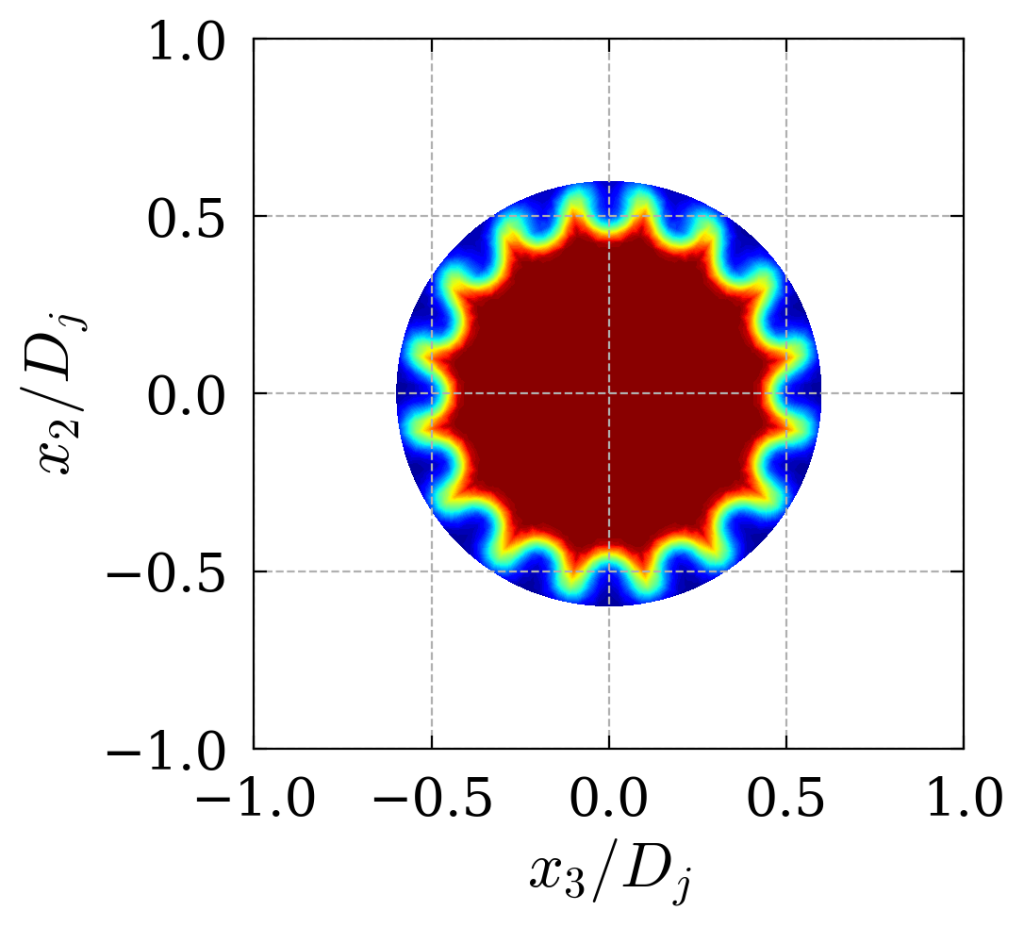Aeroacoustic Analysis of a Closely Installed Chevron Nozzle Jet using the High-Order Discontinuous Galerkin Method
Lindblad, D., Sherwin, S. J., Cantwell, C. D., Lawrence, J., Proenca, A., & Moragues Ginard, M.
DOI: 10.2514/6.2023-3831
Abstract:
In this paper, we use Large Eddy Simulations (LES) in combination with the Ffowcs Williams – Hawkings method to study the influence of chevrons on the flow field as well as the noise produced by a closely installed M = 0.6 jet. The LES simulations are performed with the spectral/hp element framework Nektar++. Nektar++ uses the high-order discontinuous Galerkin method and an implicit scheme based on the matrix-free Newton-GMRES method to discretize the unfiltered Navier-Stokes equations in space and time, respectively. The far-field noise is computed using Antares. Antares solves the Ffowcs Williams – Hawkings equation for a permeable integration surface in the time-domain using a source-time dominant algorithm. The aerodynamic results show good agreement with experimental data obtained in the Doak Laboratory Flight Jet Rig, located at the University of Southampton. Some discrepancies are observed in terms of the far-field noise levels, especially for higher polar observer angles relative to the downstream jet axis. In terms of noise reduction potential, the simulations predict that the chevrons reduce the OASPL by 1dB compared to an installed round nozzle for all observers located on the unshielded side of the wing. This should be compared to the experiments, which predict a 1.5dB noise reduction for the same chevron nozzle.
